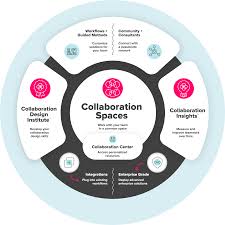The Art of Fundraising: Building a Strong Foundation for Success
Fundraising is a crucial aspect of any nonprofit organization’s operations. It involves raising funds through various channels to support the organization’s mission and programs. Successful fundraising not only provides financial resources but also helps in building relationships with donors and raising awareness about the organization’s cause.
The Importance of Fundraising
Effective fundraising is essential for the sustainability and growth of nonprofit organizations. It allows them to expand their programs, reach more people in need, and make a greater impact on society. Fundraising also helps in building a sense of community around the organization, as donors and supporters become actively involved in its activities.
Strategies for Successful Fundraising
There are various strategies that nonprofit organizations can employ to enhance their fundraising efforts:
- Developing a Clear Fundraising Strategy: Define your fundraising goals, target audience, and messaging to create a cohesive fundraising strategy.
- Diversifying Revenue Streams: Explore different sources of funding, such as individual donations, grants, corporate sponsorships, and fundraising events.
- Cultivating Relationships with Donors: Build strong relationships with donors by communicating regularly, expressing gratitude, and keeping them informed about the impact of their contributions.
- Utilizing Online Platforms: Leverage digital platforms like social media, crowdfunding websites, and email campaigns to reach a wider audience and attract new donors.
- Hosting Fundraising Events: Organize events such as galas, auctions, or charity runs to engage supporters and raise funds in a fun and interactive way.
The Impact of Fundraising
Fundraising has a profound impact on nonprofit organizations and the communities they serve. By securing financial resources through successful fundraising efforts, organizations can create positive change, support important causes, and improve the lives of those in need. Each donation received represents a step towards achieving the organization’s mission and making a difference in the world.
In Conclusion
Fundraising is both an art and a science that requires creativity, strategy, and dedication. By implementing effective fundraising practices and engaging with donors authentically, nonprofit organizations can build a strong foundation for success and continue making meaningful contributions to society.
Top 8 FAQs for Effective Fundraising: Strategies, Engagement, and Compliance
- 1. How can I start a successful fundraising campaign?
- 2. What are the best strategies for engaging donors and supporters?
- 3. How can I diversify my organization’s revenue streams?
- 4. What role does storytelling play in effective fundraising?
- 5. How do I measure the impact of my fundraising efforts?
- 6. What are some creative fundraising ideas for nonprofit organizations?
- 7. How can social media be used to enhance fundraising initiatives?
- 8. What legal regulations should nonprofit organizations be aware of when conducting fundraising activities?
1. How can I start a successful fundraising campaign?
To start a successful fundraising campaign, it is essential to begin by clearly defining your goals and objectives. Identify the purpose of your campaign, whether it is to raise funds for a specific project, support a cause, or address a community need. Develop a compelling and engaging story that resonates with potential donors and conveys the impact of their contributions. Utilize various fundraising channels such as online platforms, social media, events, and personal outreach to reach a wide audience. Cultivate relationships with donors by expressing gratitude, providing updates on the campaign’s progress, and showing the impact of their support. Consistent communication, transparency, and creativity are key elements in launching and sustaining a successful fundraising campaign.
2. What are the best strategies for engaging donors and supporters?
Engaging donors and supporters is essential for successful fundraising efforts. One of the best strategies for engaging donors is to cultivate strong relationships built on trust, transparency, and appreciation. Communicating regularly with donors, sharing impact stories, and expressing gratitude for their contributions can help foster a sense of connection and loyalty. Additionally, creating personalized experiences for donors, such as exclusive events or updates on specific projects they support, can make them feel valued and engaged with the organization’s mission. By involving donors in meaningful ways and showing them the impact of their support, nonprofits can build lasting relationships that lead to continued generosity and advocacy.
3. How can I diversify my organization’s revenue streams?
One effective approach to diversifying your organization’s revenue streams is to explore a mix of funding sources that can provide stability and sustainability. Consider tapping into individual donations, corporate sponsorships, foundation grants, government funding, and earned income opportunities such as merchandise sales or fee-based services. By broadening your financial base, you can reduce dependency on any single funding source and create a more resilient financial framework for your organization. Building relationships with diverse donors and partners can also open up new avenues for support and collaboration, ultimately enhancing your organization’s capacity to achieve its mission and serve its community effectively.
4. What role does storytelling play in effective fundraising?
Storytelling plays a crucial role in effective fundraising by creating emotional connections and engaging donors on a deeper level. Through compelling narratives, organizations can communicate their mission, impact, and the stories of those they serve in a way that resonates with donors’ values and motivations. Stories have the power to evoke empathy, inspire action, and make a lasting impression, ultimately driving donor engagement and support. By weaving storytelling into their fundraising efforts, organizations can humanize their cause, build trust with donors, and cultivate long-lasting relationships based on shared values and experiences.
5. How do I measure the impact of my fundraising efforts?
Measuring the impact of fundraising efforts is essential for nonprofit organizations to assess the effectiveness of their strategies and ensure that they are achieving their goals. One key way to measure impact is through tracking specific metrics such as donation amounts, donor retention rates, funds raised compared to targets, and the success of fundraising campaigns. Additionally, conducting surveys or feedback sessions with donors and stakeholders can provide valuable insights into how they perceive the organization’s work and the impact of their contributions. By analyzing these data points and feedback, organizations can gain a clearer understanding of the outcomes of their fundraising efforts and make informed decisions on how to improve and optimize future fundraising initiatives.
6. What are some creative fundraising ideas for nonprofit organizations?
When exploring creative fundraising ideas for nonprofit organizations, the possibilities are endless. Some innovative approaches include hosting virtual events such as online auctions or virtual concerts, organizing peer-to-peer fundraising campaigns where supporters can create their own fundraising pages, collaborating with local businesses for cause-related marketing initiatives, launching crowdfunding campaigns to reach a broader audience, and implementing unique initiatives like “fundraising challenges” or themed fundraising days to engage donors in a fun and interactive way. Thinking outside the box and tailoring strategies to resonate with supporters can lead to successful and impactful fundraising efforts for nonprofit organizations.
7. How can social media be used to enhance fundraising initiatives?
Utilizing social media can significantly enhance fundraising initiatives by expanding reach, engaging with a wider audience, and fostering connections with potential donors. Nonprofit organizations can leverage platforms like Facebook, Twitter, Instagram, and LinkedIn to share compelling stories, showcase impact, and promote fundraising campaigns. By creating interactive content, utilizing targeted advertising, and encouraging supporters to share their contributions online, social media can amplify the visibility of fundraising efforts and inspire greater participation from individuals passionate about the cause. Additionally, real-time updates and direct communication through social media channels can build trust and transparency with donors, ultimately leading to increased support for fundraising initiatives.
8. What legal regulations should nonprofit organizations be aware of when conducting fundraising activities?
Nonprofit organizations engaging in fundraising activities should be well-versed in the legal regulations that govern their operations. It is crucial for these organizations to comply with laws related to charitable solicitation, tax-exempt status, disclosure requirements, and fundraising practices. Nonprofits must ensure transparency in their fundraising efforts, accurately represent how donations will be used, and adhere to regulations set forth by federal, state, and local authorities. By understanding and following the legal framework surrounding fundraising activities, nonprofit organizations can maintain their integrity, build trust with donors, and operate ethically within the boundaries of the law.




Leave a Reply